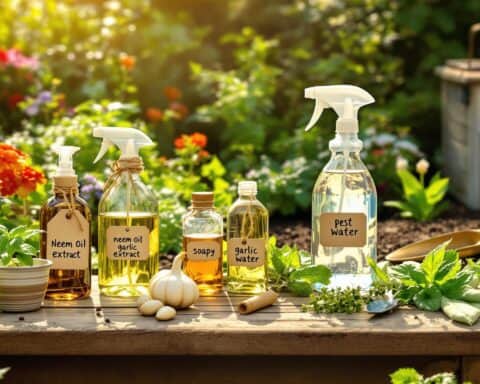Caring for home cacti can seem daunting, but with the right approach, these resilient plants can thrive indoors. Cacti, known for their striking appearances and low maintenance needs, are an excellent choice for any home. The key to successful indoor cactus care is providing at least four to six hours of bright light each day; this is essential for their growth and health. Most cacti prefer a well-lit environment where they can soak up the sun’s energy.

Watering is another critical aspect of cactus care. Many cacti and succulents thrive with intermittent but generous watering, requiring attention when the top half-inch of soil is dry. Overwatering is a common pitfall that can lead to root rot, so allowing the soil to dry out between waterings is paramount. When it comes to soil, choosing a mix designed for cacti ensures proper drainage and supports healthy root development.
By understanding their basic needs and maintaining a consistent care routine, these unique and hardy plants can add a touch of natural beauty to indoor spaces. With the right conditions and minimal effort, even beginners can enjoy the rewarding experience of keeping cacti and succulents healthy at home.
Selecting the Right Soil

Choosing the appropriate soil for cacti is crucial, as it influences the plant’s health significantly. Cacti prefer soil with excellent drainage and specific composition to prevent root rot.
Soil Types and Composition
Cacti thrive in soil that is well-draining and airy. A common recommendation is to use a specialized cactus mix, often featuring large particles like sand, perlite, or pumice. This allows quick water passage and reduces root rot risk.
Some enthusiasts create their own mix by combining regular topsoil with materials such as coarse sand and gravel. Each component plays a role; sand enhances drainage, while gravel provides weight and structure. For those preferring premade solutions, many garden stores offer ready-to-use options tailored specifically for cacti.
Importance of Good Drainage
Good drainage is vital for cactus soil as stagnant moisture can harm the plant. The soil should not remain wet long after watering. An effective strategy is using a pot with drainage holes to allow excess water to escape.
When assembling a soil mix, using elements like perlite and orchid bark can further improve drainage. This ensures that water moves quickly through the soil, preventing oversaturated conditions. For the optimal health of cacti, checking soil moisture before watering again is crucial, allowing the top layer to dry out almost entirely between watering sessions.
Watering Your Cacti

Proper watering is crucial for the healthy growth of indoor cacti. Knowing when and how much to water can prevent common issues such as yellowing leaves due to overwatering or dehydration from underwatering.
Watering Schedules
Cacti should be watered only when the soil is completely dry. In warmer seasons, this may mean watering every 10 to 14 days. During the cooler months, the frequency can reduce to once a month or even less. Each cactus may have unique needs based on its size, type, and environment, so adjustments might be necessary. Checking the soil moisture with your finger or a moisture meter can help find the best schedule.
Signs of Overwatering and Underwatering
Yellowing of the cactus, soft and mushy stems, or moldy soil suggest overwatering. Underwatered cacti may show shriveled pads or stems. If a cactus displays signs of rot, such as blackened roots, it’s crucial to let the soil dry out before the next watering. Observing the plant’s overall health and growth can help determine if the watering needs adjustment.
Lighting and Temperature

Understanding the light and temperature needs of cacti is crucial for their health. Placing them in areas with appropriate light levels and managing temperature during varying seasons ensures their optimal growth and appearance.
Understanding Direct Sunlight
Cacti thrive in bright lighting conditions. It is essential for them to receive adequate sunlight exposure, with many species needing four to six hours of bright sunlight daily. Yet, placing them in constant direct sunlight can lead to burns, particularly for some desert and forest varieties. A spot with filtered light during peak sun hours can be beneficial.
Proper lighting conditions can also be achieved with artificial light for those without access to naturally bright spots. Full-spectrum grow lights that mimic natural sunlight can support the growth of indoor cacti, ensuring they receive necessary light intensity without the risk of sunburn.
Managing Temperature in Summer Months
During the summer months, cacti can handle warmer temperatures, as many species are accustomed to hot, arid environments. However, keeping them in extremely high heat can be damaging. Ideally, maintaining indoor temperatures between 70 to 90 degrees Fahrenheit allows them to flourish, avoiding temperature spikes that could harm their growth.
Proper ventilation is equally important to prevent overheating when temperatures rise. Cacti may also be moved outdoors during the summer, ensuring they are gradually acclimatized to prevent shock. Careful management of humidity, light intensity, and watering in tandem with temperature regulation ensures a thriving environment for cacti.
Propagation and Growth

Cultivating cacti at home involves understanding how to propagate them and recognizing the diverse cultivars available. Growth methods vary, from starting with seeds to selecting unique varieties that suit your environment and aesthetic preferences.
Growing from Seeds
Growing cacti from seeds offers the benefit of observing the entire life cycle of the plant. It begins with selecting a suitable species, such as Agave parryi, known for its hardy nature. Once seeds are obtained, they should be sown in a sterile, well-draining soil mix. It’s essential to keep the soil lightly moist but not waterlogged.
Lighting is crucial for germination. Placing the seeds under bright but indirect sunlight ensures they receive adequate warmth and light. Once seedlings emerge, gradual exposure to more direct sunlight helps them develop resilience. Maintaining a consistent temperature, ideally between 70-90°F (21-32°C), aids in promoting healthy growth.
Cultivars and Varieties
Cacti come in a wide array of cultivars and varieties, each with unique traits. Lithops, or living stones, are popular for their stone-like appearance and require bright light and minimal water. Choosing the right cultivar depends on environmental conditions and the specific care one can provide.
Selecting different varieties, like those with colorful flowers or distinctive shapes, can enhance your collection. Some cultivars are naturally drought-tolerant, making them ideal for warmer, drier climates. Understanding the growth habits, such as columnar or rosette forms, helps in arranging these plants aesthetically in a garden or indoor setting.
Pest Management and Troubleshooting

Cacti, though resilient, can still face pest challenges and physical issues. Effective management involves identifying common pests and maintaining proper care of spines to prevent damage.
Common Pests like Mealybugs and Aphids
Cacti are occasionally troubled by pests like mealybugs and aphids. Mealybugs, small cotton-like insects, can cluster on cactus joints and roots, drawing sap and causing stunted growth. Aphids, small and often green or black, also feed on plant sap and can spread disease.
To manage these pests, begin with manual removal using a soft brush or cloth. Washing the plant with diluted isopropyl alcohol can help eliminate mealybugs. Systemic pesticides such as Starkle G can be used for severe infestations. Diatomaceous Earth offers an organic alternative, helping to deter both mealybugs and aphids effectively. Regular inspection and early intervention keep these pests at bay.
Physical Damage and Spine Care
Maintaining healthy spines is crucial for a cactus’s defense and structural integrity. Physical damage can occur from mishandling or environmental stress, leading to weakened or broken spines. This damage not only affects appearance but can expose the plant to diseases and pests.
To care for cactus spines, handle the plant with care, possibly with tongs or thick gloves. Ensure the plant environment supports healthy growth, with adequate light and proper watering schedules. When repotting or relocating, do so gently to prevent unnecessary spine breakage. Use a fast-draining mix to avoid root rot, which can indirectly impact spine health. Monitoring for rot or mildew on spines guides timely intervention and treatment.







